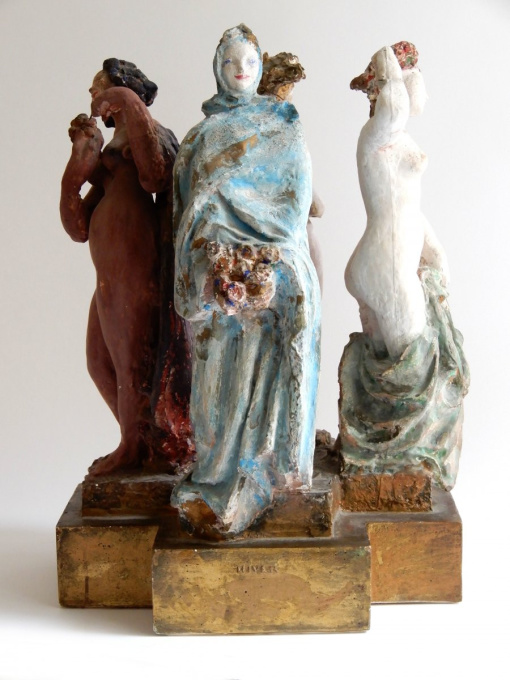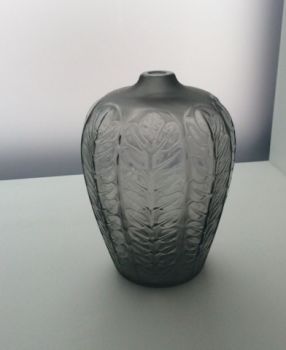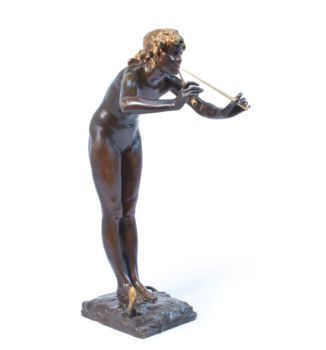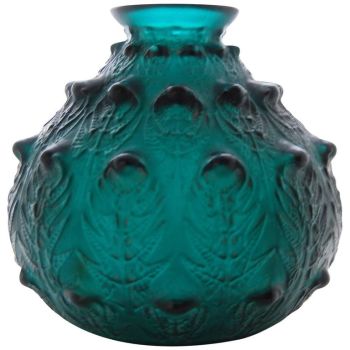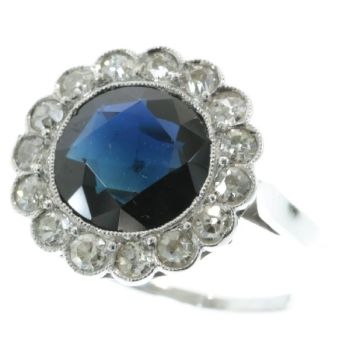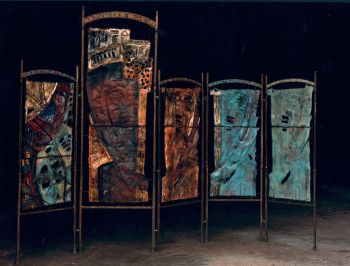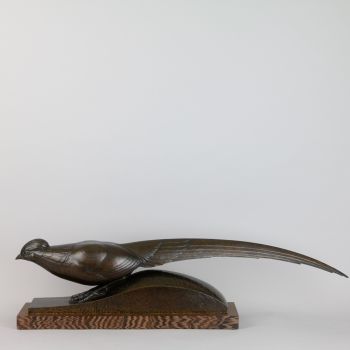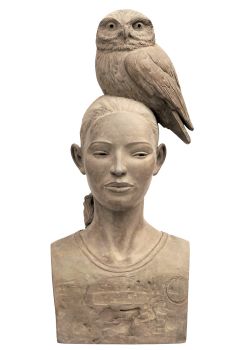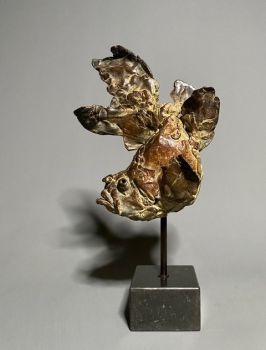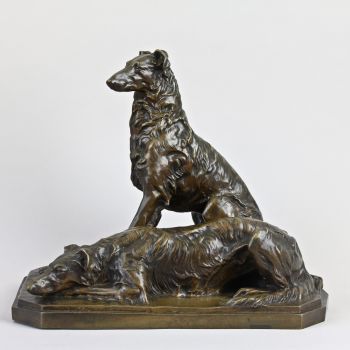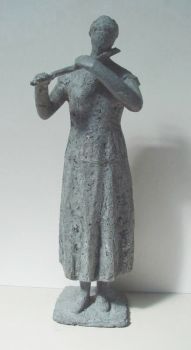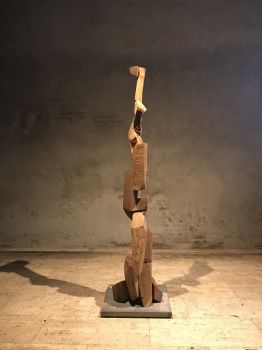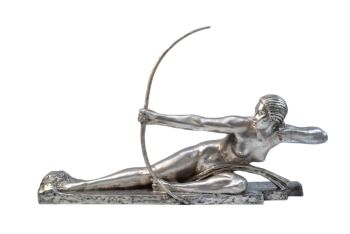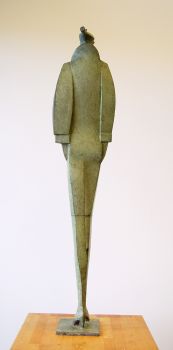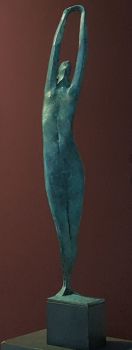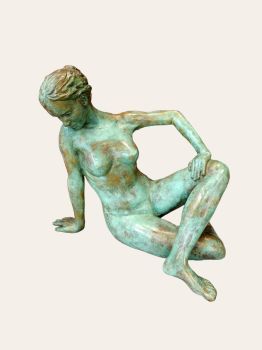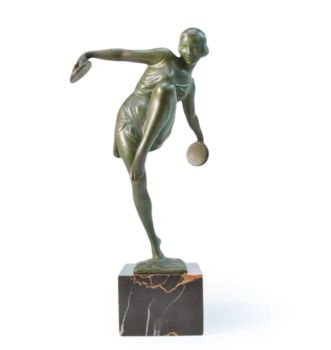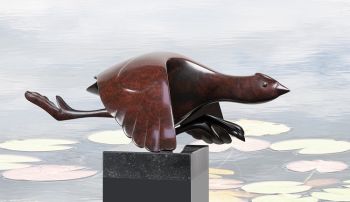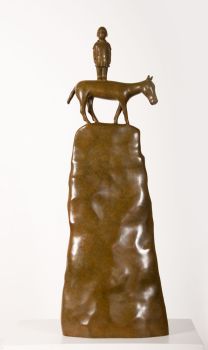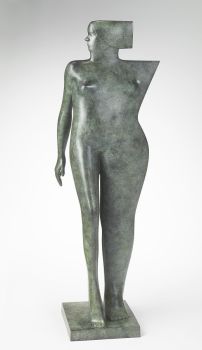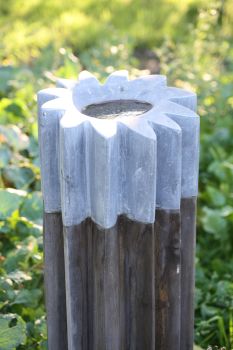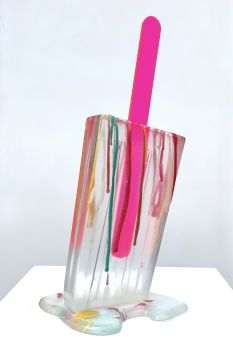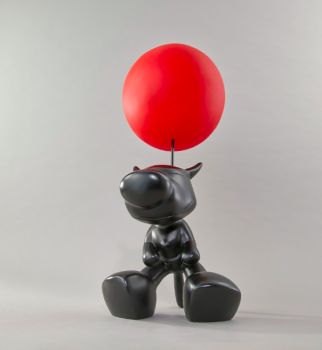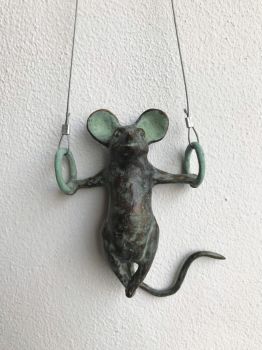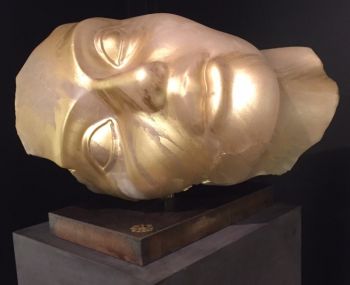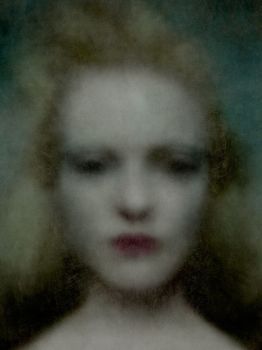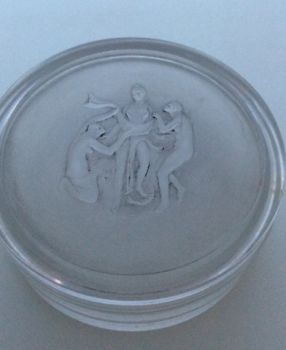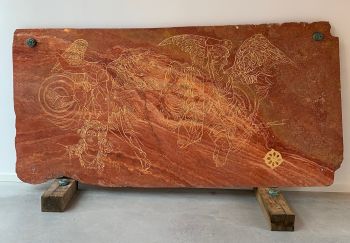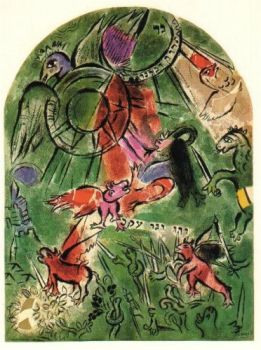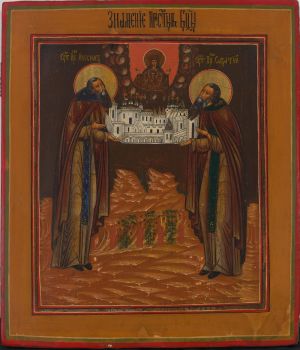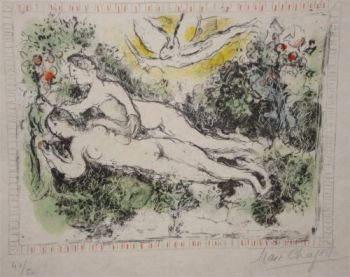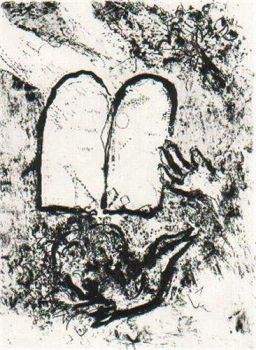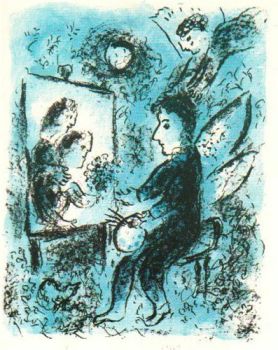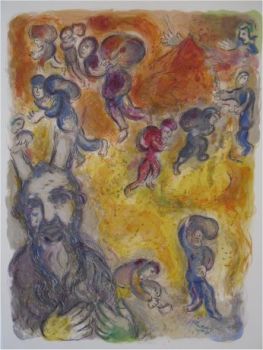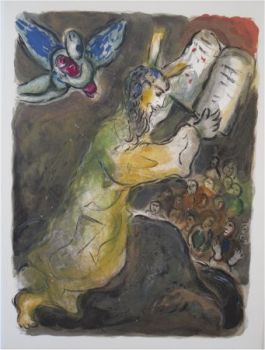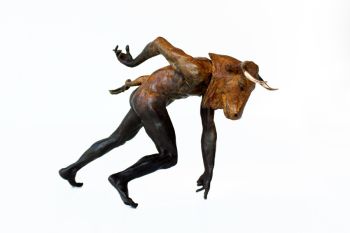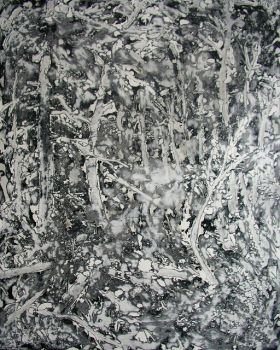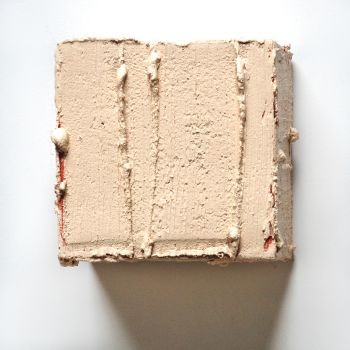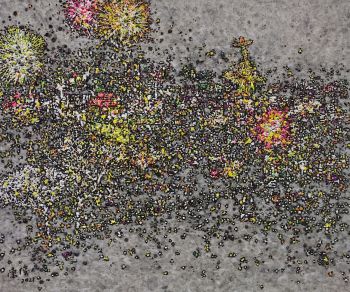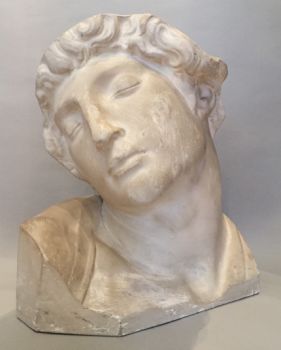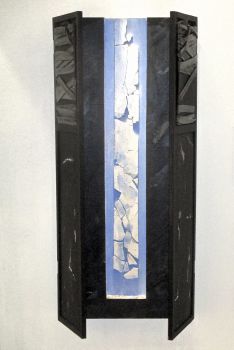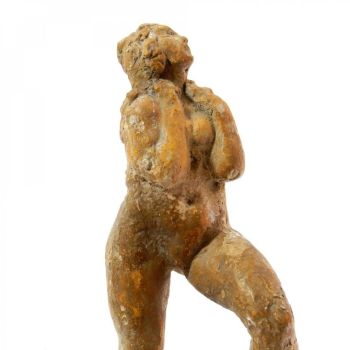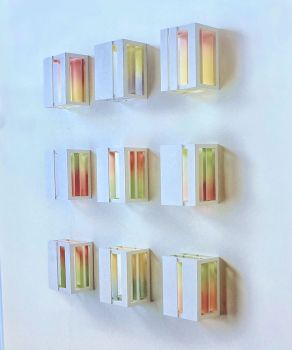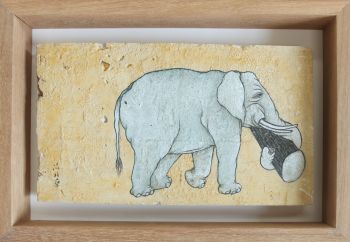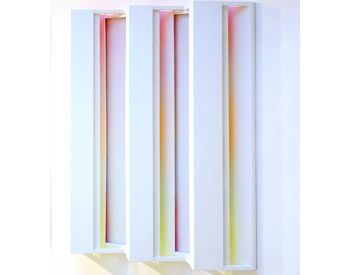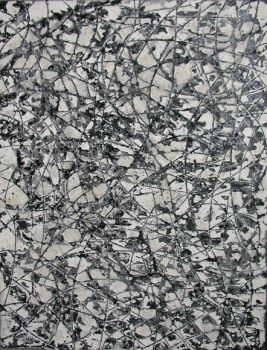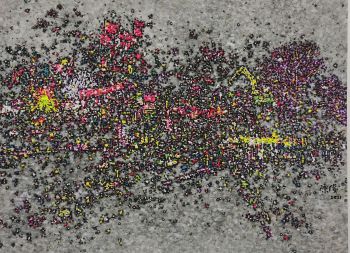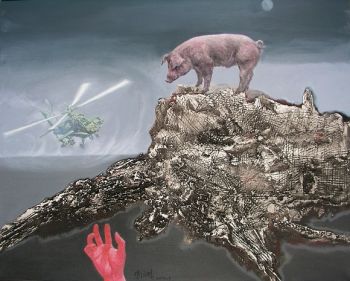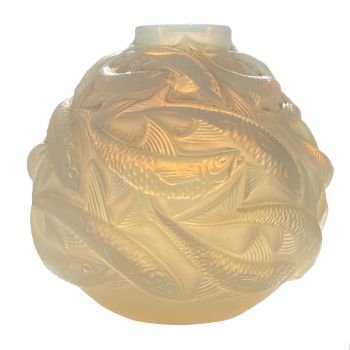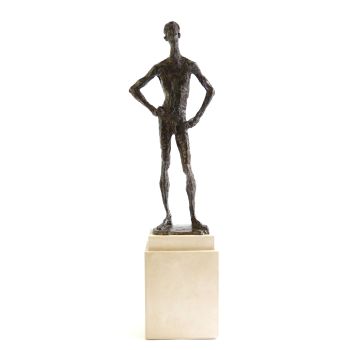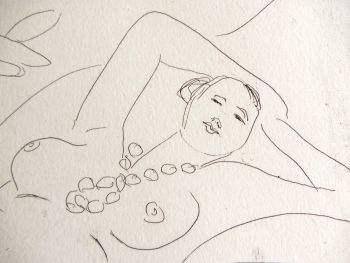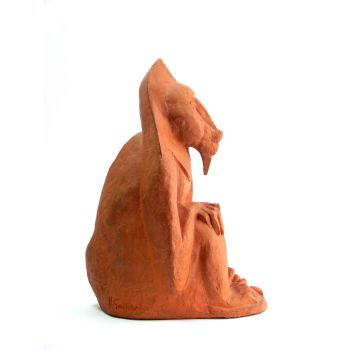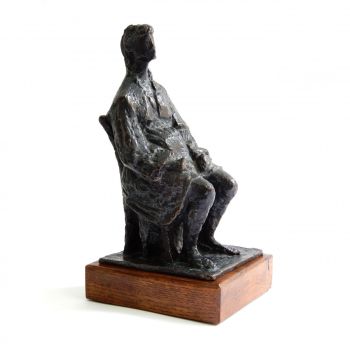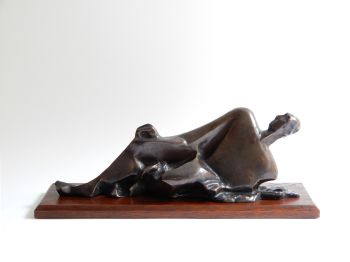'Les quatre saisons' 1953
Alfred Janniot
Plâtre
Prix sur demande
Dille Art
- Sur l'oeuvre d'art
Plaster sculpture with a polychrome patina, where the four seasons are represented as four goddesses. Janniot also wanted to try out polychromy on plaster with this plaster. He painted it with tempera. The goddesses stand on a gold-colored cross-shaped pedestal where the names of the seasons are also mentioned. The intention was to create a circle, a round dance, just like the seasons themselves. Four goddesses symbolize the four seasons: Le Printemps: Flora, goddess of flowers. It stands for the rebirth of vegetation. She is half naked and is holding a cloth (drapery), the other hand reaches for her hair. In the bronze version, she does not. l'Ete: Céres, also known as Demeter, is the goddess of the harvest. She is naked with a golden (blonde) haircut. Janniot's wife Cécile Garny was a model for this, she was his muse and a great source of inspiration for Janniot. She was also a model for the Baigneuse (National Library) and for the famous sculpture "Le torse de Mme Janniot" which he exhibited at the Venice Biennale. l'Automne: Pomona, goddess of wine and vineyards. She is naked, colored purple, she stands with a sagging hip. In one hand she holds a bunch of grapes, the other hand points to it. l'Hiver: Winter represents the art in this sculpture, actually there are nine muses of art and science, Janniot has chosen to display her completely covered, even her head is covered. Her posture suggests nighttime rest or sleep. The head upright. She has a serene expression. She holds flowers in her hands, in anticipation of spring. It is depicted in cool colours, the blue and white representing snow and ice. This plaster was a study for a bronze, commissioned by l' École Normale Supérieur in Cachan in 1953. It is a post-bachelor training and research institute, on the outskirts of Paris. The bronze version is still there, but Janniot had made minor changes, such as changes in hairstyle or posture. A terracotta version (not colored) of this plaster study is also known. This plaster is unique and very exceptional. The colors enhance the cheerful and dreamy appearance. Dimensions: base Length: 30cm (11.81") Width: 30cm (11.81") Height: 43cm (16.93")
- Sur l'artiste
Alfred Auguste Janniot (1889-1969), born in Montmartre, Paris. He studied at the École Nationale des Beaux-Arts in Paris and was a student of Injalbert. After his military service he was mobilized during WWI. He then immediately went back to work as a sculptor. He won the Prix de Rome in 1919 and left for the Villa de Medici in Rome, where he made his masterpiece 'Hommage à Jean Goujon'. The work was on display at the 1925 World Exhibition of Arts Décoratifs in the pavilion of good friend and admirer Emile Ruhlmann. He commissioned several works for Emile Ruhlmann.
Janniot was inspired by Greco-Roman mythology and the Bible. He developed a neo-classical style but with a modernist stylized interpretation and was very successful.
He was also strongly influenced by Antoine Bourdelle, who taught him many techniques in stone.
In 1928 he was commissioned to create the stone reliefs of the facade for the Musée Coloniale, then intended for the Colonial World Exhibition in 1931. He worked on this for 2 years, together with hired sculptors who helped create his designs. Today the building serves as a museum in Paris and is world famous for its beautiful impressive reliefs of oceans, ships, jungle, with animals such as zebras, elephants and many other animals.
The golden facade of the 'Maison Francaise' in the Rockefeller Center, New York is also by his hand, as is the famous entrance of Palais Tokyo (1937). During his working life he made many architectural and monumental sculptures such as fountains, monuments and bas-reliefs, but also made bas-reliefs for the great salon of the great ocean liners such as the SS Ile-de-France (1927) and the SS Normandie (1935). ).
In 1933 he married his beautiful younger wife Cécile Garny, who always remained his muse and was immortalized many times by him in stone or bronze, or in plaster, as is the case with this exceptional plaster.
During WWII, his studio was completely destroyed in a bombing raid, as a result of which much of his work was lost forever.
In 1945, Janniot became a professor of sculpture at the École des Beaux-Arts, in addition to his busy career.
Êtes-vous intéressé par l'achat de cette oeuvre?
Artwork details
Related artworks
René Lalique
Un très rare vase «Fougères» vert foncé conçu par R. Lalique1912
€ 8.950Lennart Booij Fine Art and Rare Items
 Sélectionné par
Sélectionné parSilla Scheepens
1 - 4 / 24- 1 - 4 / 24
Artiste Inconnu
Icône russe représentant une Deesis étendue1600 - 1650
Prix sur demandeKunsthandel H.W.C. Dullaert Icons
1 - 4 / 24- 1 - 4 / 14
- 1 - 4 / 12

